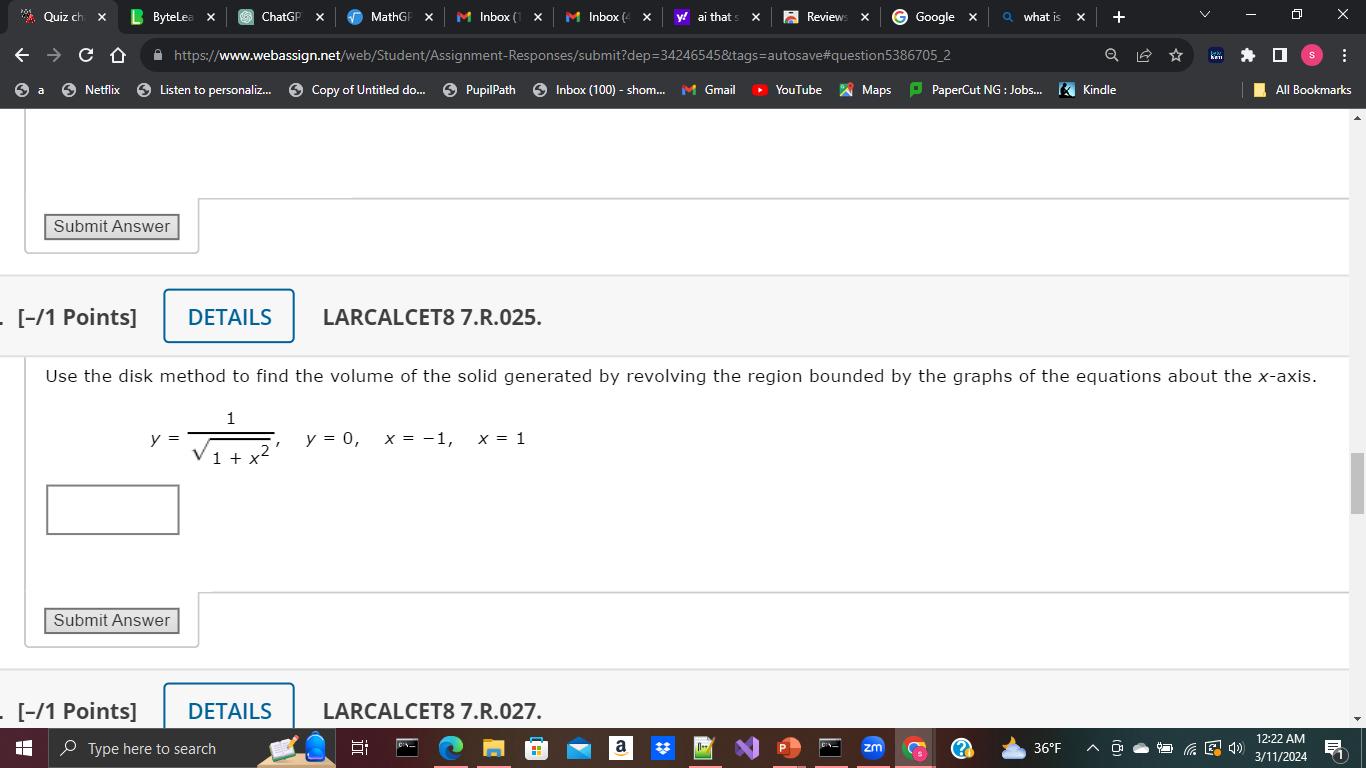Full solution
Q. Use the disk method to find the volume of the solid generated by revolving the region bounded by the graphs of the equations about the -axis.
- Set up integral: Set up the integral for the volume using the disk method.The volume V of a solid of revolution generated by revolving a region about the x-axis can be found using the formula:where is the function that defines the upper boundary of the region being revolved, and and are the limits of integration along the x-axis.For the given problem, , , and .So, the integral to find the volume is:
- Simplify integrand: Simplify the integrand before integrating.The integrand simplifies to:So the integral becomes:
- Integrate function: Integrate the function.The integral of is , so we have:
- Evaluate integral: Evaluate the integral from to .Since and , we have:
More problems from One-step inequalities: word problems
QuestionGet tutor help
QuestionGet tutor help
QuestionGet tutor help
QuestionGet tutor help
QuestionGet tutor help
QuestionGet tutor help
QuestionGet tutor help
QuestionGet tutor help

